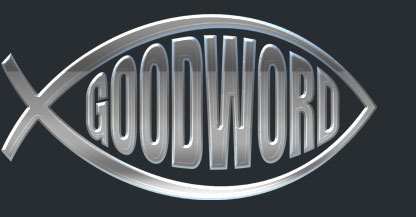| Host: | Alden Thompson |
|---|---|
| Guests: | Larry Veverka and Paul Dybdahl |
| Quarter: | His Wonderous Cross: The Story of Our Redemption |
| Lesson: | 1 |
| Sabbath: |
Genesis 1-3
Provocation and Provision. Our lessons this quarter focus on the cross of Christ and we begin the discussion where it begins in Scripture: Creation and Fall. In Genesis we only glimpse briefly the hope for the future. But in time, that hope will take on flesh and blood when God takes human flesh, lives among us, dies on a cruel cross, rises from the grave, and promises to return to take His children home. But why all the pain before restoration?
Discussion questions and themes:
- Why all the mystery and shadows? Christians are so accustomed to reading Scripture in the light of the Christian answer to the problem of sin, that it is difficult for us to hear the Genesis accounts for what they are actually saying and to distinguish that from what they seem to imply. Why doesn’t God simply spell things out clearly right from the beginning? Perhaps we could point to a quotation from C. S. Lewis about the necessity of mysterious, tantalizing, or even misleading “truths” which we accept, but which turn out to be less substantial than we had thought:
My idea of God is not a divine idea. It has to be shattered time after time. He shatters it Himself. He is the great iconoclast. Could we not almost say that this shattering is one of the marks of His presence? The Incarnation is the supreme example; it leaves all previous ideas of the Messiah in ruins. – C. S. Lewis, A Grief Observed (1961), ch. 4, para. 15.
- The more specific mysteries: Adversary, Savior, the Results of Sin.
- Why is the Adversary so veiled? The story of the fall in Genesis 3 simply begins with the note that the Serpent was more “subtle” (RSV) or “crafty” (NRSV) than all the creatures that the Lord had created. In the Jewish/Christian tradition, the serpent is not explicitly identified as Satan until Revelation 12a. What purpose does that mystery serve?
- Why is the Savior so veiled? Christians are accustomed to hearing the story of Jesus in veiled form in Genesis 3:15 (often called the “protevangelium”). But, as with the story of the Serpent, the Savior is there only in veiled form. Indeed, Genesis 3:15 doesn’t even seem to be quoted by New Testament writers. Why?
- Why are the results of sin not clarified until the NT? Genesis 3 does not spell out the moralresults of evil: Genesis tells us that the woman will suffer in childbirth and the man will have to grapple with thorns and thistles. But not until Romans 5 do we hear clearly about the moral taint which came with the fall. Why? Compared with the Old Testament, does Romans 5 make the New Testament more pessimistic or more optimistic about human nature?
- The larger setting: Freedom, Judgment, Hope. Again, Genesis only provides the raw material which Christians have used to address the great questions of human destiny. Attempts to justify a good God in the presence of evil (= theodicy), often focus on the importance of human freedom. In that connection, the following questions are ones worth pondering:
- Small vs. large test. Enormous consequences seem to flow from the simple act of eating the forbidden fruit. Can we know why God used such an “easy” test? Shouldn’t the fate of the universe depend on major, not minor questions?
- Freedom vs. determinism. The Genesis story seems to imply that our first parents were free to choose their destiny. But in our humanity as we know it today, we often seem locked into our destiny by our genetics and/or our environment. Are we truly free? If freedom was so important at the beginning, why isn’t it equally important for us now?
- Hope vs. despair . The hints of hope in Genesis 3 are very modest indeed. If God has planned on restoration, why didn’t He make it clearer to our first parents?
Resource and background material . Some of the foundational questions addressed in this lesson are discussed in the context of the biblical material in Alden Thompson, Who’s Afraid of the Old Testament God? (Reprint edition: Pacesetters, 2003).
- History of Satan/Adversary : chapter 3, “Whatever happened to Satan in the Old Testament?”
- History of the messianic hope: chapter 7, “The best story in the Old Testament: the Messiah”
- Biblical foundation for the great controversy between good and evil, Christ and Satan: chapter 2, “Behold it was very good – but then it all turned sour.”




